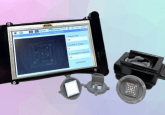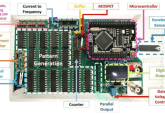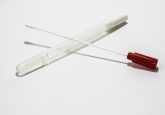Nanoscale breath analysis: the future of disease diagnostics?

A team led by II-Doo Kim (Korea Advanced institute of Science and Technology, Republic of Korea) have developed a diagnostic sensor that could recognize specific gas biomarkers linked to disease. The new technology could enable easy monitoring and earlier diagnosis of disease by simply characterizing biomarker gas concentrations in exhaled breath.
The study, published in Accounts of Chemical Research, demonstrated how researchers have developed a chemiresistive sensor by using protein encapsulated nanocatalysts. Trace changes in exhaled breath could be detected using this nanosensor, allowing rapid analysis of disease biomarkers.
However, accurate analysis of gases, which occur at very low levels (1 ppb to 1 ppm), has proved difficult using existing technologies. A highly sensitive and selective sensor was required to detect specific biomarkers amongst other interfering gases.
Existing technology using single component noble metallic catalysts in sensors could not provide enough gas sensitivity to detect low levels of biomarkers. To overcome this limitation, researchers used a nanoscale protein, apoferritin. This features hollow nanocages, which were advantageous as an unlimited number of material compositions could be assembled for the synthesis of heterogeneous catalytic nanoparticles.
Through using the heterogenous catalysts, with porous and large surface areas, the team developed sensing layers that were optimized for selective detection of specific biomarkers. This type of catalyst improved the performance of biomarker sensing by 3–4-fold.
Researchers demonstrated that through using a 16-sensor array system, disease states could be continuously monitored by analyzing biomarker concentrations. Kim concluded: “New types of heterogeneous nanocatalysts were synthesized using protein templates with sizes around 2 nm and functionalized on various metal oxide nanofiber sensing layers. The established sensing libraries can detect biomarker species with high sensitivity and selectivity. The new and innovative breath gas analysis platform will be very helpful for reducing medical expenditures and continuous monitoring of physical conditions.”
Sources: Kim S-J, Choi S-J, Jang J-S, Cho H-J, Kim I-D. Innovative nanosensor for disease diagnosis. Acc. Chem. Res. 50(7), 1587–1596 (2017); https://phys.org/news/2017-07-nanosensor-disease-diagnosis.html






